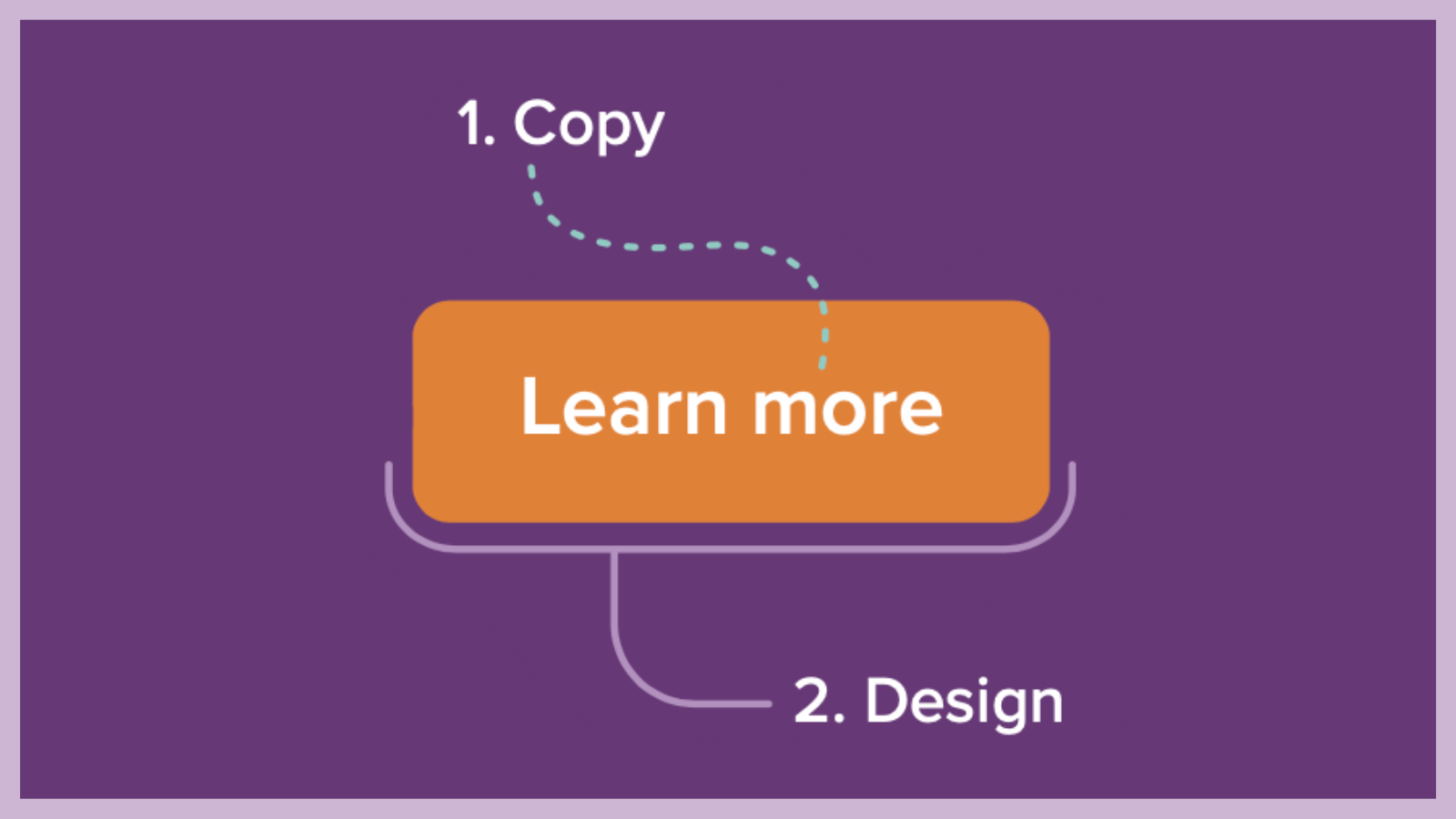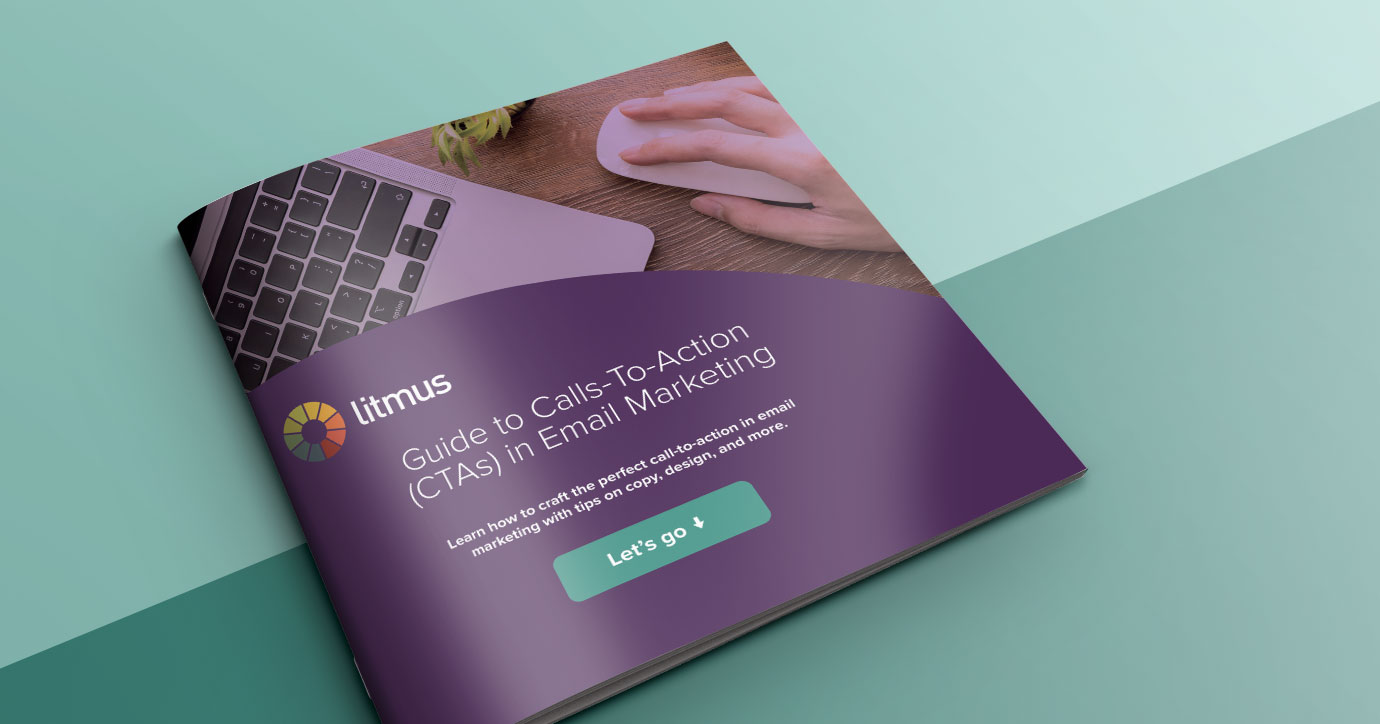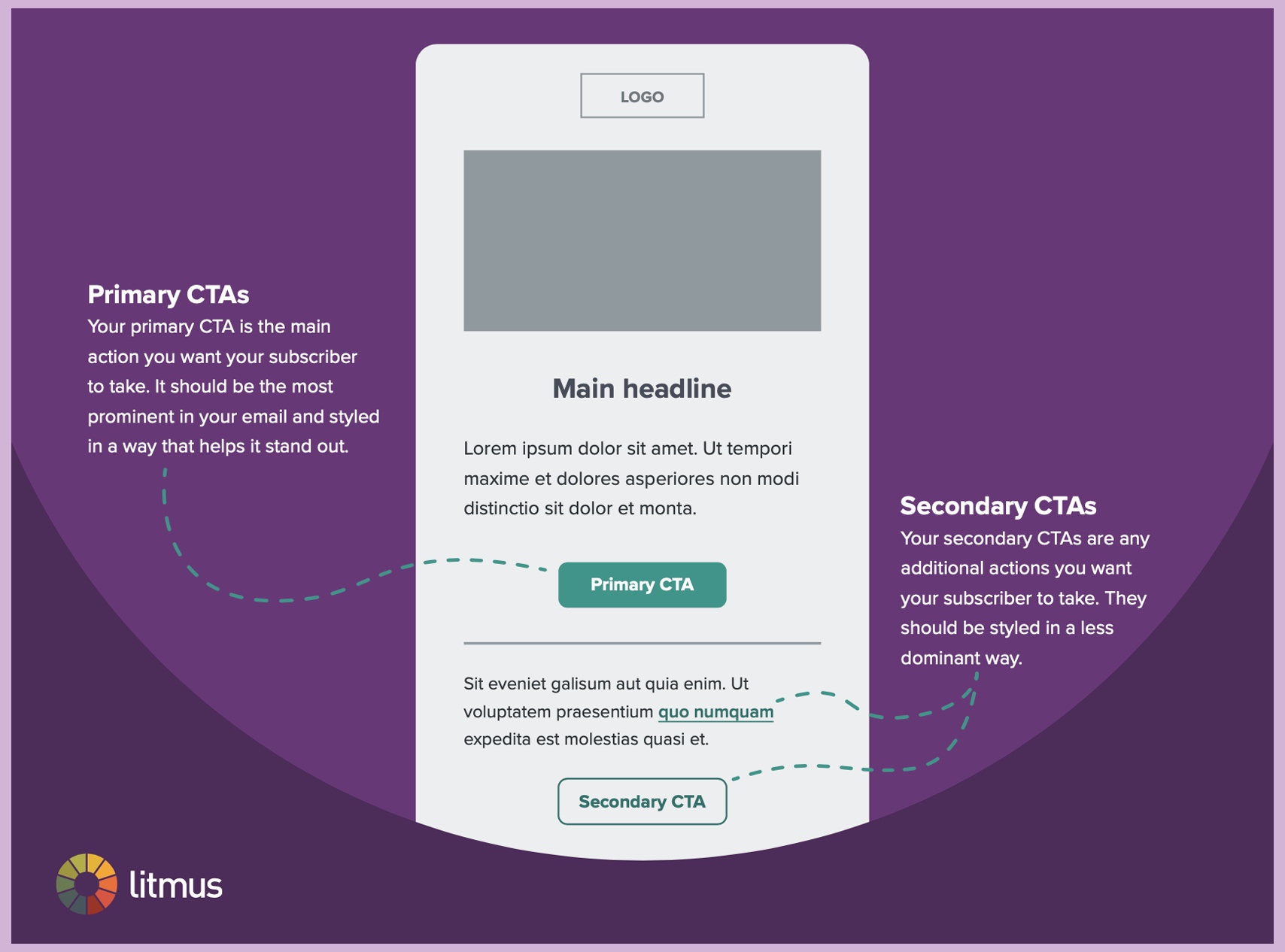Tips for Writing Compelling Email Call-To-Action (CTA) Copy
Email marketers and designers know there’s more to impactful calls-to-action (CTAs) than adding a button or hyperlinked text. There’s a lot to consider—from writing compelling copy to best practices for design.
Ideally, our subscribers are doing more than just reading our emails; our hope is that they take action. The real value lies in the click, tap, and touch—and it all starts with your CTA.
In this blog, we’ll go over considerations for writing email CTA copy—plus an overview of design considerations, too.
First, let’s look at the main components of an email CTA. Or, if you’d like to jump right in, check out our Guide to Calls-To-Actions (CTAs) in Email Marketing.
Anatomy of an email CTA
CTAs are comprised of two parts:
- Copy
- Design

Let’s dive into steps you can take to write more effective email CTA copy.
Copy
Words have power, and CTAs are no exception. The copy used in your CTA can compel your subscriber to take (or not take) the desired action you want when crafted effectively.
Here are some things to consider to help you write strong copy for your CTAs:
- Highlight the benefit
- Use power words
- Write from your subscribers’ point of view
Let’s take a brief look at each of these tips, adapted from our Guide to Calls-To-Actions (CTAs) in Email Marketing.
Highlight the benefit
The text enclosed in your CTA—whether it’s a button or hyperlinked text—should clearly state the main benefit that will be received upon click.
Use power words
Power words are used to stimulate a strong psychological or emotional response. They’re persuasive and draw readers in, and when used effectively, can influence your subscriber to take action.
Write from your subscribers’ point of view
Think critically: What value are you providing your subscriber, based on what you know about them? Another tactic is using first-person language, which we dive into more detail in our guide.

| Get CTA copy examples for your own emails Want power words and example scenarios to help you craft your most perfect, email CTA? Grab them in our Guide to Calls-To-Actions (CTAs) in Email Marketing. |
Design
The other component to an effective email CTA is design. What factors should you keep in mind when designing email CTAs?
Design considerations for an effective email CTA:
- Create visual hierarchy
- Apply styling techniques
- Prioritize accessibility
Want a breakdown of these design principles? We walk you through them, complete with examples to apply to your own designs, in our Guide to Calls-To-Actions (CTAs) in Email Marketing.

Ready to transform your CTAs?
In our easy-to-digest guide, you’ll learn how to craft the perfect email CTA, including:
- The anatomy of a strong CTA and its most critical components
- Design techniques to guide subscribers to your desired action
- Tips for writing compelling CTA copy for action-oriented results
Learn how to craft more actionable CTAs today.

Kimberly Huang
Kimberly Huang is a Content Marketing Manager at Litmus
